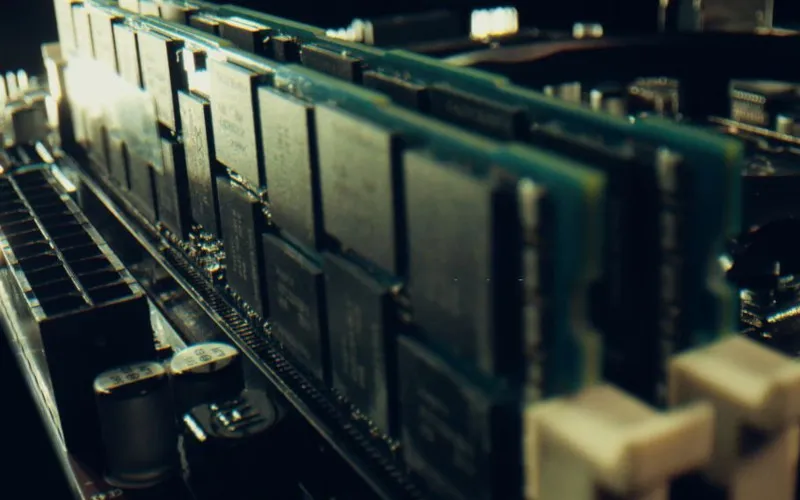As a computer science enthusiast, I have always been fascinated by the complex mechanisms that make our devices work seamlessly. Among these mechanisms, primary and secondary memory are two critical components that play a significant role in the overall performance of a computer system.
In this article, I will delve deeper into the difference between primary memory and secondary memory, and how they impact our computing experience.
Definition and Characteristics of Primary Memory
Primary memory, or main memory, refers to the memory storage directly connecting to the CPU (Central Processing Unit). It is where the CPU stores data that is actively being processed.
Primary memory is volatile, meaning it can only retain data once the computer is on. Once the power is off, all data stored in primary memory is lost. Examples of primary memory include Random Access Memory (RAM) and cache memory.
RAM is the most common type of primary memory and has a limited capacity compared to secondary memory. RAM is also much faster than secondary memory and is used to store data that needs to be accessed quickly by the CPU.
Cache memory, on the other hand, is a smaller and faster type of primary memory that stores frequently accessed data to reduce the time it takes to access it.
Definition and Characteristics of Secondary Memory
Secondary memory, or auxiliary memory, refers to memory storage not directly connected to the CPU. It is used for storing data that does not need to be accessed frequently, such as files, documents, and programs.
Secondary memory is non-volatile, meaning it can retain data even when the power is off. Other types of secondary memory include HDDs, SSDs, CD/DVDs, and USB drives. These storage devices allow access to long-term data that can be used later on for different tasks.
Secondary memory has a much larger capacity than primary memory but is slower. It is typically used for long-term storage and archiving data that is not immediately needed. HDDs are the most common type of secondary memory, and they use magnetic disks to store data.
SSDs, on the other hand, use flash memory and are faster than HDDs. CD/DVD and USB drives are also popular types of secondary memory, and they are portable and can be used to transfer data between computers.
Primary Memory vs Secondary Memory Comparison Table
| Criteria | Primary Memory | Secondary Memory |
|---|---|---|
| Function | Stores data actively being processed | Stores long-term data |
| Capacity | Limited capacity (few GBs) | Large capacity (TBs) |
| Speed | Very fast (nanoseconds) | Slower (milliseconds/seconds) |
| Volatility | Volatile (loses data when power is off) | Non-volatile (retains data even when power is off) |
| Cost | Expensive (measured in dollars per GB) | Less expensive (measured in dollars per TB) |
| Applications | Used for quick access to frequently used data | Used for long-term storage and archiving of data |
Key Differences Between Primary and Secondary Memory
The key differences between primary memory and secondary memory are as follows:
- Function: The primary function of primary memory is to store data actively processed by the CPU. The primary function of secondary memory is to store data that is not immediately needed and for long-term storage.
- Capacity: Primary memory has a limited capacity compared to secondary memory. Primary memory can typically store up to a few gigabytes of data, while secondary memory can store terabytes.
- Speed: Primary memory is much faster than secondary memory. Data can be accessed from primary memory in nanoseconds, while data access from secondary memory can take milliseconds or even seconds.
- Volatility: Primary memory is volatile, meaning data is lost once the power is off. Secondary memory is non-volatile, meaning data is retained even when the power is off.
- Cost: Primary memory is more expensive than secondary memory. The cost of primary memory is typically measured in dollars per gigabyte, while the cost of secondary memory is measured in dollars per terabyte.
- Applications: Primary memory is used for storing data that needs to be accessed quickly by the CPU. Secondary memory is used for storing data that is not immediately needed and for long-term storage.
Importance of Primary and Secondary Memory
Primary memory is crucial for computer performance because it stores data actively processed by the CPU. The more RAM a computer has, the faster it can process data. If a computer does not have enough primary memory, it will have to rely on virtual memory, which can slow down performance significantly.
Secondary memory is equally important because it provides long-term storage for data that needs to be retained. Without secondary memory, we could not store files, documents, or programs for future use.
Additionally, secondary memory allows us to transfer data between computers, essential for collaborating and sharing information.
Conclusion
Primary memory and secondary memory are two critical components of a computer system that play complementary roles in data storage and processing. Primary memory is used for storing data actively being processed, while secondary memory is used for long-term storage and archiving of data.
The key differences between primary and secondary memory include function, capacity, speed, volatility, cost, and applications. Understanding these differences can help us make informed decisions when choosing computer hardware and optimizing system performance.






